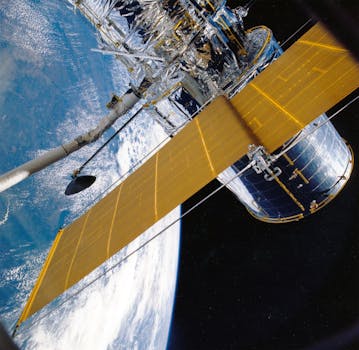
The Future is Now: Exploring the Cutting-Edge Innovations in Satellite Telecommunications
Satellite telecommunications, the focus keyword, is revolutionizing the way we communicate and access information. The future is now, and it’s more exciting than ever. With the rapid advancement of technology, satellite telecommunications has become a vital part of our daily lives, connecting people and devices across the globe. In this article, we will explore the cutting-edge innovations in satellite telecommunications and their impact on the future of global communication.
One of the most significant innovations in satellite telecommunications is the development of Low Earth Orbit (LEO) satellites. These satellites are designed to operate in lower orbits, reducing latency and increasing bandwidth. Companies like SpaceX and OneWeb are leading the charge in LEO satellite technology, with plans to launch thousands of satellites in the coming years. This will enable faster and more reliable internet connectivity, even in the most remote areas of the world.
Another area of innovation is in satellite antenna technology. Traditional satellite antennas are large and bulky, but new advancements have led to the development of smaller, more compact antennas. These antennas are not only more aesthetically pleasing but also more efficient, allowing for faster data transfer rates and better signal quality. This technology is particularly useful for mobile satellite communications, enabling users to stay connected on-the-go.
The Impact of Satellite Telecommunications on Global Communication
The impact of satellite telecommunications on global communication cannot be overstated. With the ability to connect people and devices across the globe, satellite telecommunications is bridging the digital divide and enabling access to information and services that were previously unavailable. This is particularly significant for remote and underserved communities, where satellite telecommunications is often the only means of communication.
Satellite telecommunications is also playing a critical role in emergency response and disaster relief. In the event of a natural disaster, satellite communications can provide a vital lifeline, enabling emergency responders to coordinate relief efforts and communicate with affected communities. This technology is also being used to monitor and track natural disasters, such as hurricanes and wildfires, providing critical information to emergency responders and helping to save lives.
The Future of Satellite Telecommunications
As technology continues to evolve, the future of satellite telecommunications looks brighter than ever. With the development of new satellite constellations and advancements in antenna technology, we can expect to see even faster and more reliable internet connectivity. This will enable a wide range of applications, from telemedicine and online education to IoT and autonomous vehicles.
Furthermore, the integration of satellite telecommunications with other technologies, such as 5G and artificial intelligence, will create new opportunities for innovation and growth. This will enable the development of new services and applications, such as smart cities and precision agriculture, which will transform the way we live and work.
Conclusion
In conclusion, the future of satellite telecommunications is now, and it’s more exciting than ever. With cutting-edge innovations in LEO satellites, satellite antenna technology, and emergency response and disaster relief, satellite telecommunications is shaping the future of global communication. As technology continues to evolve, we can expect to see even more innovative applications and services, transforming the way we live and work.






